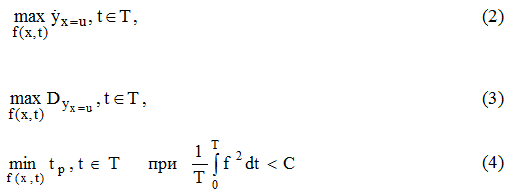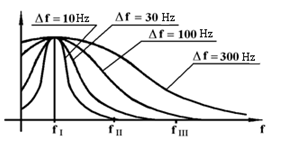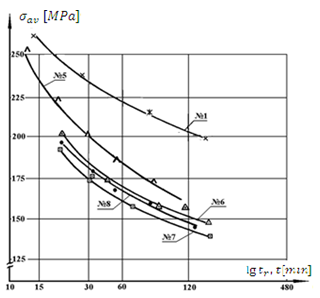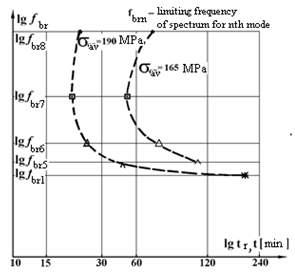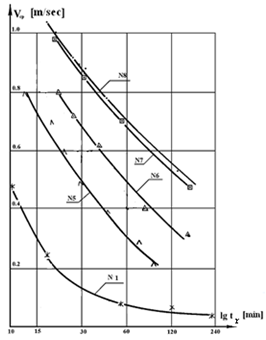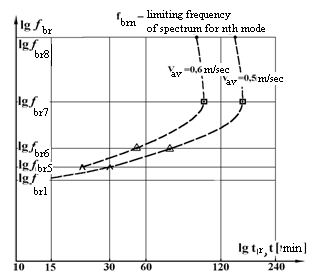EXPERIMENTAL DETERMINATION OF THE HEAVIEST MODE OF VIBRATION TESTS IN CLASS OF BROADBAND RANDOM VIBRATION
Овчинников И.Н.
Доктор технических наук, Московский государственный технический университет им. Н.Э. Баумана
ЭКСПЕРИМЕНТАЛЬНОЕ ОПРЕДЕЛЕНИЕ ТЯЖЕЛЕЙШЕГО РЕЖИМА ИСПЫТАНИЙ В КЛАССЕ ШИРОКОПОЛОСНОЙ СЛУЧАЙНОЙ ВИБРАЦИИ
Аннотация
Предложено экспериментальное подтверждение результатов, полученных ранее в теории и моделированием, по выявлению существования тяжелейшего режима широкополосной случайной вибрации (ШСВ) по его влиянию на механическую систему. Тяжелейший режим ШСВ по долговечности механической системы определяется ее характеристиками, аналогично собственным частотам системы. Знание о тяжелейшем состоянии при ШСВ полезно не только для проведения ускоренных испытаний, но и для стандартизации испытаний, для оценки уровня опасности эксплуатационных вибраций, для технологических процессов, акустики и, вероятно, для сопротивления землетрясениям.
Ключевые слова: широкополосная случайная вибрация, испытания, тяжелейший режим.
Ovchinnikov I.N.
Doctor science, Bauman Moscow State Technical Universit.
EXPERIMENTAL DETERMINATION OF THE HEAVIEST MODE OF VIBRATION TESTS IN CLASS OF BROADBAND RANDOM VIBRATION
Abstract
It is proposed the experimental confirmation of results, which have been previously obtained in theory and by means of simulation, revealing existence of the hardest mode of broadband random vibration (BRV) during its effect on mechanical system. The hardest BRV mode by the durability of the mechanical system is defined by its characteristics, similar to original frequencies of the system. Knowledge about the hardest BRV condition is useful not only for conducting accelerated trials but also for standardization of trials, for evaluation of level of danger of operating vibrations, for technological processes, acoustics and probably for resistivity to earthquakes.
Keywords: broadband casual vibration, tests, heaviest mode.
- Introduction
Known that more than 70% of malfunctions in technics are caused by a vibration, which results in a fatigue failure of parts of a construction, transported loads, also in breakages and halting of electronic devices. Obtaining of reasonable compromise between the maximum of reliability and minimum of weight is laid in the development of methods of adequate investigation of materials’ behavior in constructions with given resource and reliability, and that shows the importance of vibration trials. At present trials on broad random vibrations are used most often (BRV).
International Electrotechnical Commission (IEC) sets two main requirements for vibration trials on its’ result’s veracity and reproducibility in different laboratories, which are especially important in conduction of acceptance trials. Reproducibility of trials’ results cannot be reached with low veracity. It is also necessary that ranges of vibration load, which are formed, take into account the dynamics of the trials’ object, what is done during harmonic loadings. At present ISO series standards ignore that.
Hardest mode BRV, determined by dynamics of trials’ object, is necessary for raising levels of reproducibility of trials’ results, standardization of modes of vibration and fatigue trials, forming modes of accelerated trials in technological processes. In [1] is theoretically shown than extremums of parameters of vibration loads exists in any mechanical system. They correspond to extremums of power of mechanical forces, appearing in system during broadband random vibration. In [2] it is shown by the means of numerical simulation that during broadband random vibration there are extremums of tension in the material and vibrospeed during the capture of «n» original frequencies of the system (n ≥ 2) by range of vibroeffect. In other words there is such width of the range that the ratio (in probabilistic aspect) of amplitudes of components of oscillatory process on its own frequencies. Existence of such components of oscillatory process out of original frequencies, which is usual for BRV, just lowers lifespan of the objects.
However, neither tension nor vibrospeed of the object uniquely characterize the level of danger of mode, before now it could only be determined by minimal time until object fracture (lifespan), which is investigated only by an experiment.
- Objectives of the experiment
Forming of hardest condition in its essence is a problem of optimization vibroeffect with given power. It comes to discovering the class of effects f(x, t), which creates extreme conditions of object load. Mathematically it can be expressed by relation:
For f(x,t)ÎФ, where F – functional, characterizing vibrational movement of the object.
In general case the problem (1) is difficult to solve, but in practical realization of the trials there are limitations on kind of effect (power, number of harmonics), on control coordinates for object movement (dangerous intersection) and so on. That is why one can investigate particular problems:
In other words it is necessary, by changing the range of the spectrum, to find in which one the vibrospeed (2) or dispersion of vibrospeed (3) in the intersection during the time t are maximal, and time before fracture of object tp (4) is minimal for given limited power of tension.
Choice of vibrospeed on dangerous intersection of object instead of vibroacceleration as parameter, which characterizes vibroloading of object, is explained by ratio of amplitude of this tension in material [3].
- New capacitive sensor of flexural deformations
In order to raise veracity and reliability of trials’ results a series of indestructible contactless capacitive sensors , which allow to measure almost limitless by value flexural deformations for indefinite time, was developed. Capacitive sensors, on the opposite of resistive-strain sensors, do not deform with an object, do not accumulate damage, that is why they keep their metrological characteristics constant. Capacitive sensor of deformation EED [4] has been developed in order to measure deformation of flat and cylindrical surfaces with zero gauss curvature in radial direction. It consists of metal lining 1 with cylindrical working surface, which through the layer of dielectric 2 is pushed towards (or placed close to) surface under study 3, which is the second lining of capacitor (fig.1).
Fig. 1 - Capacitive sensor of deformations for flat and cylindrical surfaces (EED).
With the bending of an object the distance δ between linings of the capacitor is changed and electric signal of sensor is proportional to the change of curvature and curvature deformation of an object. Area of linear characteristic of capacitive sensor in statics and dynamics is higher than it is of resistive-strain sensors. Its range covers values of deformation in the given experiment including low-cycle area of fatigue. Sensibility of the sensor is defined by curvature of measuring lining and can vary in a wide range. Two linings from two sides of an object raise sensibility by 2 times. Measuring lining does not deform with an object, and consequently its lifespan almost unlimited.
Experimental investigation of lifespan. Investigation of effect of vibration spectrum width Df on vibroloading (vibrospeed) and lifespan was conducted on cantilevered fixed beam in kinematic excitation (fig. 2).
Fig. 2 - Three first forms of original oscillations of testing object (beam) in kinematic excitation.
The trial was conducted with random modes for following values of Df: 10 Hz (mode №5); 30 Hz (mode №6); 100 Hz (mode №7); 300 Hz (mode №8) (fig. 3). Numbers of testing modes are given with correspondence to full series of testing modes [5]. The results of trials in harmonic mode№1 are introduced only for qualitative comparison.
Fig. 3 - Continuous spectrums of incoming vibroeffect.
Experiment on fatigue was conducted according to method, which does not simplify any random process, because replacement of random vibroeffect with harmonic mode is not correct [5]. All measurements and, most importantly deformations were applied from the start of trial until the fracture of the object.
As it common for lifespan investigations the results were introduced in a form of fatigue curves – dependence of logarithm of time till the fracture on average tension in the material (fig. 4). It is shown that with the widening of load range lifespan of the material of the object is falling in the beginning and then raising.
Fig. 4 - Fatigue curves of modes №№ 1(harmonic), 5-8 (random)
Existence of extremum of lifespan depending on limiting frequency of spectrum of vibroeffect fгр during constant tension in the objects is clearly shown in picture 5, which has been obtained by processing results of fatigue trials. As a limiting frequency of spectrum for harmonic mode (mode №1 [5]) logarithm of first original frequency of the object f1=27 Hz, and for random mode with continuous spectrum – logarithm of sum of average spectrum frequency (first original frequency of the object) and half of spectrum width for chosen mode:
During random oscillations the object was significantly being exited on the second and the third original frequencies (f2=177 Hz, f3=475 Hz).
Fig. 5 - Dependence of the object lifespan on width of vibroload spectrum with constant average tension.
In order to raise informational content of the results of trials “vibroloading” curves, which show the dependence of logarithm of time until fracture on vibrospeed in sample’s dangerous cross-section (fig. 6), have been drawn first time in practice.
Fig. 6 - Depending tp of the samples of Vsr in a dangerous cross-section of the beam (curves of the “vibroloading”).
Similar existence of extremum of lifespan depending on limiting width of vibroeffect spectrum fгр,but with constant average vibrospeed in dangerous intersection of the object, obtained by transforming “vibroloading curves” [5], is shown on figure 7.
Fig. 7 - Dependence of material samples lifespan on width of vibroloading spectrum with constant average vibrospeed.
Despite the fact that curvature of graphs 5 and 7 in given coordinates is relatively small, there is no doubt in the existence of extremums, because the points on the curves correspond to high amount of fractured test objects. The veracity of the test results is high enough thanks to application more perfect methods of trials and deformation sensors.
- Conclusions
- The existence of extremums in the dependencies of lifespan, tension and vibrospeed, which are invariant toward the width of the vibroloading spectrum, has been noticed first time, Width of the continuous vibroloading spectrum, which is corresponding to those extremums, is called effective width of spectrum (EWS) - Δfnwhere n ≥ 2 - amount of original frequencies of the object, which are excited.
- The hardest BRV condition of mechanical system is defined by its characteristics, similar to original frequencies of the system.
- Knowledge about the hardest BRV condition is useful not only for conducting accelerated trials but also for standardization of trials, for evaluation of level of danger of operating vibrations, for technological processes, acoustics and probably for resistivity to earthquakes.
References
- Ovchinnikov I. N. The usage of “transparency frequency bands” of mechanic systems for standardization of tests to random vibration. Proceedings 12 International Congress on Sound and Vibration, Lisbon, Portugal, 2005.
- Ovchinnikov I. N. Simulation of oscillations of a beam at random vibroloading. Proceedings 15 International Congress on Sound and Vibration, Daejeon, Korea, 2008.
- Sidorenko M.K. Vibrometry of turbineengines. : Mechanical engineering, 1973.
- Ovchinnikov I.N. Capacitive sensor for measuring flexural deformations. Devices and control system. 3, 1995, p.25.
- Ovchinnikov I.N., Stepnev V.A., Brancevich P.Y. Authenticity of the equivalent vibration tests. Proceedings 19 International Congress on Sound and Vibration, Vilnius, Lithuania, 2012.


